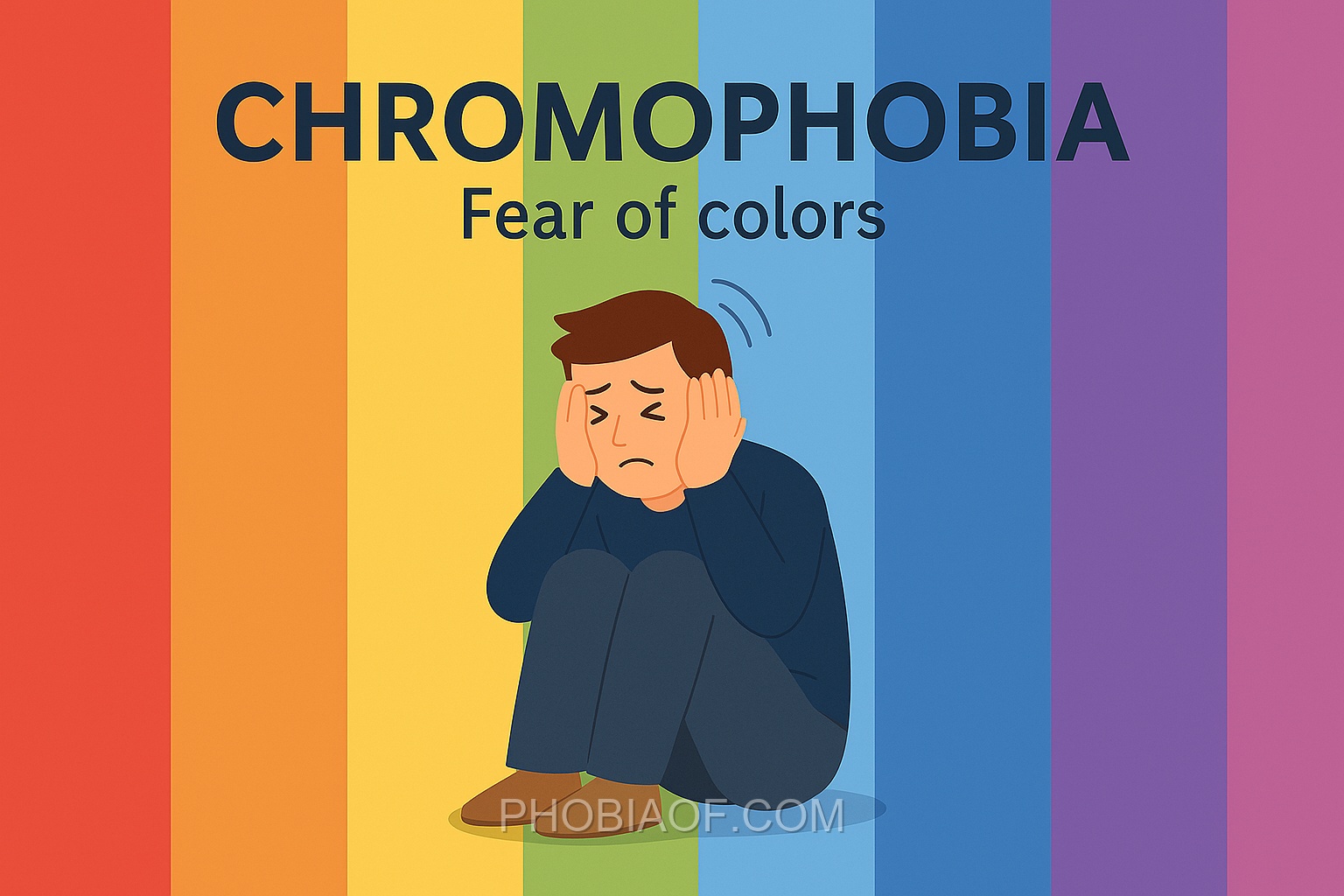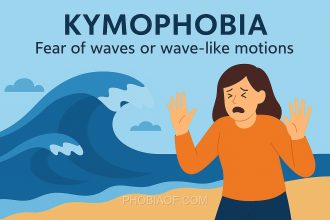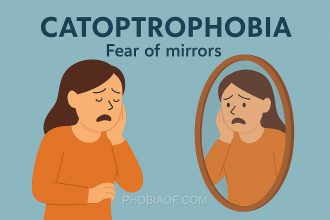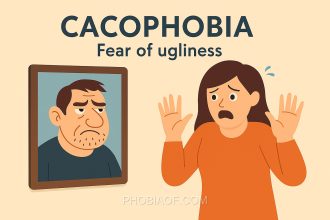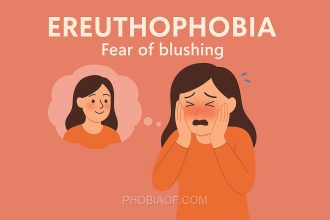Have you ever felt uneasy around certain colors or found yourself avoiding them altogether? If so, you might be experiencing a rare yet intriguing condition known as Chromophobia.
Chromophobia, also referred to as Chromatophobia, is the fear of colors. This condition derives its name from the Greek words “chroma,” meaning color, and “phobos,” meaning fear. While it might sound unusual, for those affected, the fear is very real and can significantly impact their daily lives.
Individuals with Chromophobia may experience anxiety or discomfort when exposed to certain colors, sometimes leading to avoidance behavior. The intensity of the fear can vary greatly, with some people feeling mild irritation while others may have more severe reactions, such as panic attacks.
The effects of Chromophobia can be profound, influencing one’s choice of clothing, home decor, and even the environments they choose to spend time in. It can limit social interactions and hinder personal expression, making everyday situations challenging.
Understanding the roots and expressions of Chromophobia helps shed light on this fascinating aspect of human psychology, encouraging empathy and support for those navigating life with this unique fear.
Causes of Chromophobia
Chromophobia, or the fear of colors, is a rare phobia that can significantly impact an individual’s daily life. Understanding its potential causes helps in addressing the phobia effectively. Here are some common reasons why someone might develop this fear:
- Genetic Predisposition:
Some individuals may have a genetic predisposition to anxiety disorders, including specific phobias like chromophobia. A family history of phobias or anxiety can increase the likelihood of developing similar conditions.
- Traumatic Experiences:
Experiencing or witnessing a traumatic event involving colors can lead to the development of chromophobia. For example, an accident where a specific color was prominent might trigger an irrational fear associated with that color.
- Learned Behavior:
Observing others, especially during childhood, can influence phobic reactions. If a parent or close relative has a strong fear of colors, a child might learn and adopt this fear through observation and imitation.
- Psychological Factors:
Underlying psychological issues such as anxiety, obsessive-compulsive disorder, or other phobias may contribute to the development of chromophobia. The fear of colors might be a manifestation of broader mental health challenges.
- Environmental Factors:
Our environment plays a crucial role in shaping our fears. Cultural associations with colors, such as certain colors being linked to bad luck or danger, can exacerbate or trigger chromophobia in some individuals.
While these are some potential causes, it is essential to remember that phobias are complex and can result from a combination of factors. Research into the origins of chromophobia is ongoing, and understanding these causes can help in developing effective interventions and therapies.
Symptoms of Chromophobia
Chromophobia, also known as fear of colors, can cause intense fear or anxiety in those affected. The phobia may manifest through a range of physical, emotional, and behavioral symptoms. Recognizing these symptoms can help individuals identify this phobia in themselves or others.
Physical Symptoms:
- Panic attacks, characterized by sudden, intense fear and discomfort.
- Excessive sweating, particularly when exposed to certain colors.
- Rapid heartbeat or palpitations, often triggered by visual stimuli.
- Shortness of breath or a feeling of choking when confronted with specific colors.
- Nausea or gastrointestinal distress in response to color exposure.
Emotional/Behavioral Symptoms:
- Avoidance of places or situations where feared colors are present.
- Overwhelming dread or a sense of impending doom when thinking about or encountering certain colors.
- Difficulty concentrating or focusing due to persistent fear of colors.
- Feelings of helplessness and loss of control in situations involving colors.
- Intense desire to escape or flee from situations involving certain colors.
When severe, these symptoms can significantly interfere with daily life, impacting work, social interactions, and overall well-being.
Treatment for Fear of Colors
Feeling overwhelmed or anxious about colors? Rest assured, Chromophobia is a manageable condition, and with the right treatment and coping strategies, you can overcome it over time. Let’s explore some effective methods to help you face and manage this fear.
Therapeutic Options
There are several proven therapies to treat Chromophobia, each designed to address the fear at its core:
- Exposure Therapy: This involves gradually and systematically facing the colors that trigger fear in a controlled and supportive environment. Over time, this helps desensitize your reaction to the colors.
- Cognitive-Behavioral Therapy (CBT): CBT focuses on changing the negative thought patterns associated with your fear of colors. By restructuring these thoughts, you can reduce anxiety and develop healthier reactions.
- Counseling: Talking with a professional counselor can provide support and insight into the root causes of your phobia, offering personalized strategies to manage it effectively.
Self-Help Coping Techniques
Alongside professional therapy, there are several self-help strategies that can complement your treatment:
- Relaxation Exercises: Techniques such as deep breathing, progressive muscle relaxation, and guided imagery can help reduce anxiety levels.
- Meditation: Regular meditation practice can enhance your overall sense of calm and reduce the intensity of phobic responses.
- Support Groups: Connecting with others who understand your experience can provide encouragement and shared advice on overcoming Chromophobia.
Additional Considerations
In some cases, medication such as anti-anxiety medications may be prescribed for severe symptoms. However, therapy and coping skills are typically the focus of treatment.
Remember, seeking professional help is a sign of strength. If Chromophobia is interfering with your daily life, don’t hesitate to reach out to a mental health professional. With patience and the right support, you can reclaim your comfort with colors.
Conclusion
In understanding chromophobia, the fear of colors, it becomes evident that acknowledging the causes and symptoms is a crucial step in addressing this unique phobia. By identifying the underlying triggers and emotional responses associated with specific colors, individuals can begin to demystify their fears and take proactive steps towards overcoming them.
Empowerment through Knowledge: By gaining insights into chromophobia, you can feel more empowered and in control. Recognizing that many people experience similar fears can reduce feelings of isolation and encourage you to seek solutions tailored to your needs.
Remember, overcoming or managing a phobia is a journey that many have successfully navigated. With time, dedication, and proper support, the grip of chromophobia can be loosened, allowing for a more vibrant and colorful life. If you find yourself struggling, consider reaching out to a mental health professional or talking to a doctor for guidance and support. There are numerous therapeutic options available that can provide relief and coping strategies.
Ultimately, chromophobia does not have to define your experience. With the right help and a commitment to understanding your fears, a more fulfilling and less color-averse life is entirely within reach. Stay hopeful and informed as you take these steps towards healing and growth.
